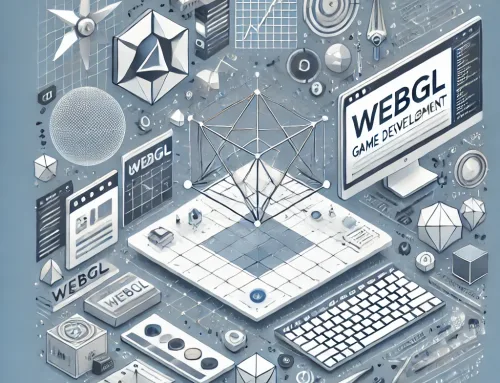Mach es persönlich: Erfolgfaktoren in der Product Customization.
Schon seit langer Zeit haben viele Unternehmen in diversen Branchen die Potenziale individualisierbarer Konsumgüter erkannt. Einzelhändler nutzen Big Data, um ihren Kunden ein personalisiertes Sortiment an Produkten zu präsentieren – es ist die treibende Kraft hinter dem Erfolg von Amazon. Jetzt machen Marken mit der Personalisierung einen großen Schritt nach vorn in Richtung Mass Customization. Sie entdecken, dass sie die Kundenbindung und -verpflichtung steigern können – und nutzen ihren Kundenstamm als Triebkraft für potenzielle Käufer.
Product Customization hilft Unternehmen, den Umsatz auf ihren eigenen Websites zu steigern. So entwerfen die Kunden von Pepperidge Farm jetzt beispielsweise Goldfish Cracker und die Jawbone Kunden konfigurieren ihre eigenen Jambox Lautsprecher. Trek ermöglicht Radfahrern, ein Fahrrad von Grund auf zu bauen. Und Brooks Brooks Brothers erlaubt Männern, ihre eigenen Anzüge zu gestalten.
Eine Umfrage von Bain unter mehr als 1.000 Online-Shoppern ergab, dass weniger als 10 % der Befragten zwar Anpassungsmöglichkeiten ausprobiert haben, 25 % bis 30 % jedoch daran interessiert sind. Experten schätzen das Marktpotenzial von Product Customization in den USA auf ca. 2 Milliarden $ ein.
Über die reine Größe der Chance hinaus zeigte unsere Umfrage, dass sich die Kunden, die ein Produkt online individualisiert hatten, sich stärker mit dem Unternehmen beschäftigten. Sie besuchten die Website häufiger, blieben länger auf der Seite und waren der Marke treuer. So ergab die Untersuchung, dass Kunden, die ihre eigenen Schuhe entworfen haben, den Unternehmen einen um 50% höheren Net Promoter ScoreSM (NPS®) – eine Standardmethode zur Messung der Kundenbindung – gaben als Kunden, die reguläre Produkte von demselben Hersteller kauften. Höhere NPS bedeutet in der Regel höhere Umsätze, Empfehlungsraten und einen höheren Kundennutzen. Ken Seiff, Executive Vice President of Direct and Omni-Channel Marketing bei Brooks Brothers, sagt:“Im Allgemeinen sind Kunden, die maßgeschneiderte Produkte kaufen, zufriedener und wertvoller. Durch die Automatisierung der Anpassung über das Web können Unternehmen ein Kundensegment einfacher auf den Faktor 1 reduzieren. In fünf Jahren wird dies von den Verbrauchern erwartet.“
Durch die Bereitstellung von Anpassungsmöglichkeiten steigern Marken die Loyalität in einer Zeit, in der es wichtiger denn je ist: In einer kürzlich durchgeführten Umfrage von Bain unter mehr als 1.200 Führungskräften aus verschiedenen Branchen gaben 67% an, dass ihre Kunden ihrer Marke immer weniger treu sind. Gleichzeitig können sich Unternehmen durch die Anpassung ihrer Produkte von ihren Mitbewerbern differenzieren, während das Internet schnell eine hohe Preistransparenz schafft und es den Kunden erleichtert, Produkte mit Standardfunktionen zu vergleichen. Laut Google, 49% der Handy-Besitzer nutzen ihr Gerät, um Preise zu vergleichen, und die Zahl der Handy-Besitzer Preisvergleich Apps steigt. Wir haben festgestellt, dass unsere Kunden bereit sind, 20 % mehr als die Standardpreise für maßgeschneiderte Produkte zu zahlen – und viele Unternehmen verlangen erfolgreich höhere Prämien.
Die Anpassung hilft Unternehmen auch dabei, spezifische Verbraucher zu erreichen – wie z. B. die unvorhersehbaren Käufer der Jahrtausendgeneration, eine Gruppe, die für ihre schnelllebigen Präferenzen bekannt ist. Als wachsende Konsumkraft verlangen junge Käufer mehr individualisierte Produkte als ihre älteren Kollegen – sie sind keine Einheitsgröße, sondern passen in jede Generation. Durch die zunehmende Verbreitung von Social Media und Online-Publishing ändern sich Stile und Trends schneller als je zuvor und zwingen die Verkäufer dazu, mit veränderten Präferenzen Schritt zu halten. Unternehmen, die maßgeschneiderte Lösungen anbieten, können Verbraucher als Händler einsetzen – sie erhalten kontinuierlich Einblicke aus kundenspezifischen Designs und der Feinabstimmung von Produkten in einem Feedback-Kreislauf, der Unternehmen hilft, dem Wettbewerb immer einen Schritt voraus zu sein. Mit jeder Designwahl teilen die Kunden in Echtzeit Shopper-Vorlieben, die weit über das hinausgehen, was sie in einer Fokusgruppe sagen würden. Zum Beispiel wird das, was Brooks Brothers von seinen Kunden in einer Saison lernt, systematisch eingesetzt, um die Produktlinie der nächsten Saison zu liefern.
„All diese Aktivitäten deuten auf ein rasantes Wachstum der Angebote im Mass-Customization-Bereich in allen Kategorien hin. Frühe Pioniere wie Oakley haben gezeigt, dass die Nachfrage der Verbraucher nach maßgeschneiderten Produkten groß ist, und erfolgreiche Programme sorgen für einen positiven ROI und eine positive Kundenverpflichtung „, so Kent Deverell, CEO von Fluid, einer digitalen Agentur und Software als Dienstleister, der Unternehmen bei der Einführung von Anpassungsangeboten unterstützt.
Die Kunden gewöhnen sich immer mehr an Möglichkeiten der Produktindividualisierung, genauso wie sich die Rahmenbedingungen entwickeln, um den Markt zu bedienen. Die Technologie hat sich weiterentwickelt, um flexible, digital gesteuerte Fertigungsprozesse zu ermöglichen und kundeninitiierte Designprozesse in Lieferketten zu integrieren. Rechenleistung und Bandbreite sind jetzt ausreichend, um kundenseitige Designprozesse zu ermöglichen, ohne die User experience aus den Augen zu verlieren. Unternehmen wie Fluid fungieren als One-Stop-Shop für eCommerce-Einzelhändler und Marken, die ihren Kunden maßgeschneiderte Lösungen anbieten möchten. Letztlich müssen Unternehmen vor allem in der Materialbeschaffungskette Anpassungen vornehmen, um die Rentabilität der Kundenanpassung sicherzustellen – aber diese Herausforderungen werden zunehmend gemeistert.
„Welche Angebote Unternehmen erbringen, hängt davon ab, was die Verbraucher wünschen. Wir haben uns ursprünglich auf die Fitnessprobleme konzentriert, mit denen sich einige Leistungssportler konfrontiert sehen, aber wir haben herausgefunden, dass sich die Menschen online nicht so sehr für Passform und Größe interessieren „, sagt Harm Ohlmeyer, Chief E-Commerce Officer bei Adidas. Die Vorlieben der Verbraucher variieren von Kategorie zu Kategorie. Bains Umfrage ergab, dass die Schuhkunden drei bis vier Wochen auf die Lieferung eines Produkts warten wollen, dass aber das Interesse an maßgeschneiderten Herrenhemden nach zweiwöchiger Wartezeit zurückgegangen ist. Eines scheinen alle Kunden zu wollen: die Möglichkeit, die Ware innerhalb einer angemessenen Frist, in der Regel 30 Tage, zurückzusenden. Unsere Umfrage ergab, dass die Nachfrage nach kundenspezifischen Produkten rapide abnimmt, wenn die Verbraucher denken, sie könnten mit etwas zu tun haben, was ihnen nicht gefällt – auch wenn die Rücklaufquoten für die frühen Anwender von Produktanpassungen niedriger sind als bei Standardprodukten.
Neben der Anpassung des Angebots an den Kunden erfordert Erfolg auch, dass man sich im Vorfeld entscheidet, was ein Unternehmen aus dem Spiel herausholen will. Einige Unternehmen nutzen es zur Verbesserung der Kundengewinnung und -bindung, während andere es zu einem eigenständigen Unternehmen machen. Das Wissen um die Zielsetzung hilft bei der Bestimmung einer zweiten großen Überlegung: Wie viel Anpassungsmöglichkeiten bieten wir Ihnen?
Alle erfolgreichen Unternehmen folgen fünf Regeln:
Know what you want. Bevor Unternehmen die neuen Möglichkeiten testen, müssen sie sich darüber im Klaren sein, welchen strategischen Wert sie sich von den Produktindividualisierungen erhoffen. Sofern eine Erhöhung der Kundenbindung als Ziel ausgegeben wurde, werden die Kosten für die Product Customization ähnlich hoch sein wie in PR, Werbung, Marktforschung oder Social Media. Die Investition der Pepperidge Farm in anpassbare Goldfisch-Cracker sorgt laut der digitalen Agentur Fluid für deutlich höhere Ausgaben. Für andere Unternehmen hingegen bildet das Gewinnpotenzial den Hauptgrund sich mit der Product Customization zu beschäftigen. Das, so Fluid, sei der Antrieb für Longchamps gewesen, selbst gestaltete Versionen seiner legendären Le Pliage Tragetaschen zu entwickeln. Am äußersten Ende des Spektrums befinden sich Unternehmen, bei denen die Product Customization das Kerngeschäft bildet. Als Beispiel ist hier das Unternehmen Wild Things mit dem Angebot individualisierbarer Insulight Jacken zu nennen.
Know how much customization you really need to offer. Einige Marken ermöglichen es den Verbrauchern, ein einzigartiges Produkt zu entwerfen, welches nach der Bestellung kundenindividuell hergestellt wird und eine Reihe kundenindividueller Funktionen ermöglicht. Genau das macht Indochino mit seinen maßgeschneiderten Anzügen, die nur online erhältlich sind. Andere Unternehmen hingegen bieten eher kleinere Individualisierungsmöglichkeiten an wie z.B. das Hinzufügen eines Monogramms zu einen Standard-Hemd oder das Gravieren von Namen auf Aktentaschen. Und wieder andere, wie Serena & Lily bieten das sogenannte „consumer-choice bundling“ an bei den Kunden z.B. ihre eigene Bettwäsche aus einer entsprechenden Auswahl kombinieren können. Der Prozess mag sich persönlich anfühlen, aber es handelt hierbei nicht um Product Custaomization. Kunden kaufen bestehende Produkte, die dann aus einem Lager abgeholt und an sie versandt werden. Für die meisten Einzelhändler ist es die Option, die am sinnvollsten ist – sie können aus einer Standardproduktlinie verkaufen. Der durchschnittliche Bestellwert von Serena & Lily ist 88% höher für Kunden, die Bündel bestellen als für Kunden, die Artikel für Artikel kaufen.
Make it simple. Die eingesetzten Visualisierungen zur Product Customization müssen für den Kunden leicht zu bedienen sein. Wenn die Individualisierungsprozesse zu kompliziert sind, werden viele Nutzer den Design- und damit auch letztendlich den Kaufprozess abbrechen. Auch eine zu große Auswahl wirkt sich negativ auf den Bestellprozess aus. Bei Schuhen z.B. könnte dies bewerkstelligt werden, indem die Individualisierungsmöglichkeiten auf 7 bis 10 Designvarianten beschränkt werden, die für den Kunden wichtig und einfach umzusetzen sind.
Let people share. Viele Personen möchten ihre individuell gestalteten Produkte auch mit Freunden und Verwandten teilen. Dieser soziale Aspekt hilft Unternehmen, bestehende Kunden zu binden und gleichzeitig neue Kunden zu gewinnen. Longchamp bietet eine Facebook-Anwendung an, mit der Nutzer ihre Handtaschen-Kreationen online teilen können. Andere Unternehmen bieten ihren Kunden die Möglichkeit, einen virtuellen Katalog mit all ihren Kreationen zu erstellen. Es lassen sich noch viele weitere gute Ideen anführen.
Enhance the customer experience—and don’t disappoint. Sofern sich Unternehmen für die Product Customization entscheiden, müssen Sie die Prozesse der Produktindividualisierung so angenehm wie möglich gestalten.
Da immer mehr Einzelhändler und Marken ihren Kunden die Option Design-It-Yourself bieten, sollten sie einen Gewinnzuwachs erzielen, mit ihren besten Kunden in Verbindung bleiben und die Kosten senken. Gewinner werden diejenigen sein, die ihre Ziele kennen, verstehen, wie viel Personalisierung sie wirklich brauchen, die Dinge einfach halten und ein wiederholbares Modell schaffen, um Kunden immer wieder zu begeistern.


